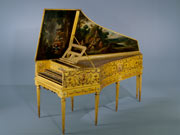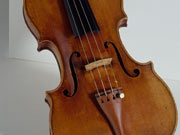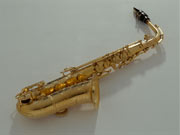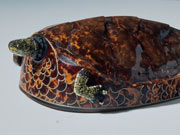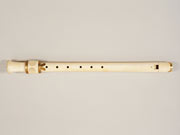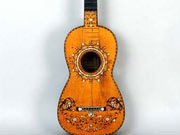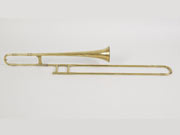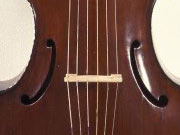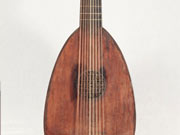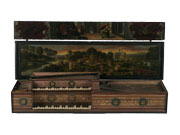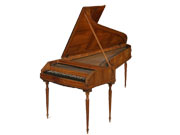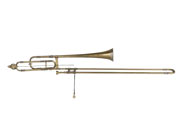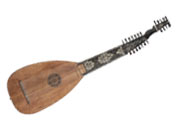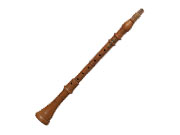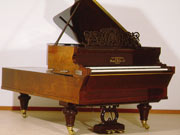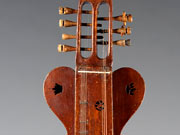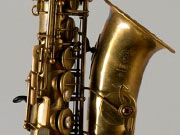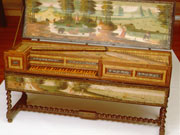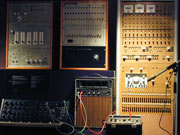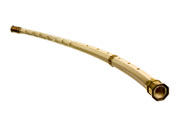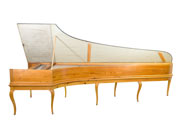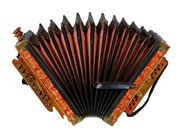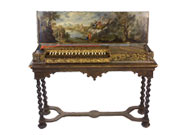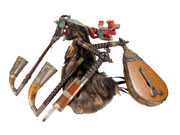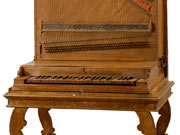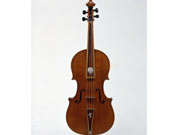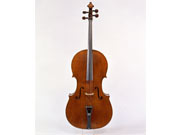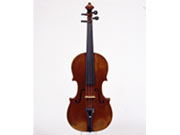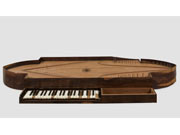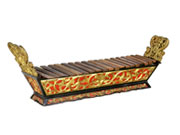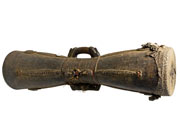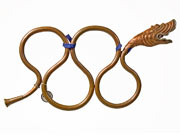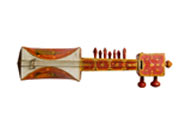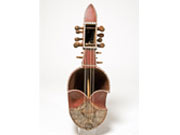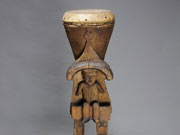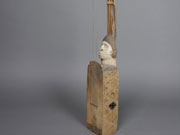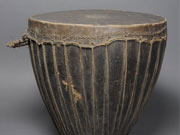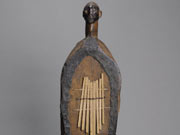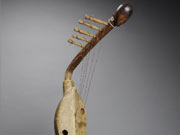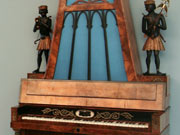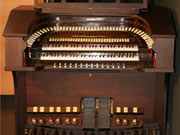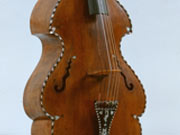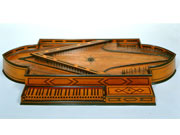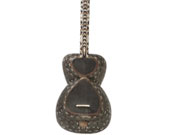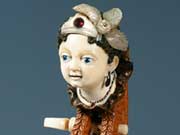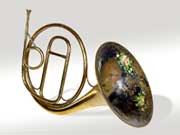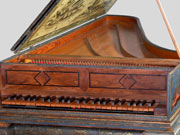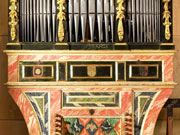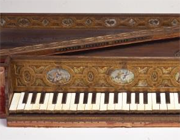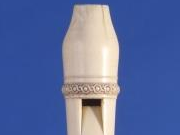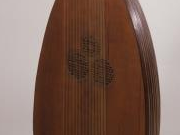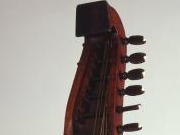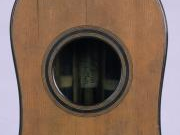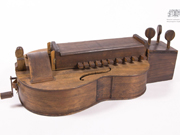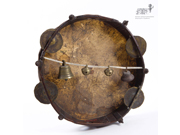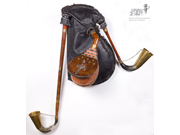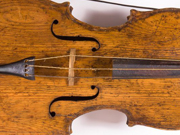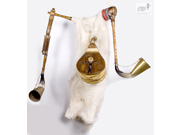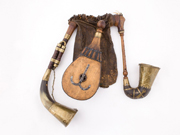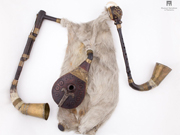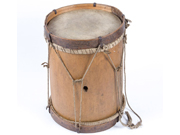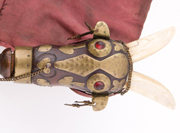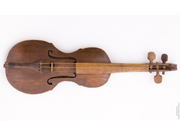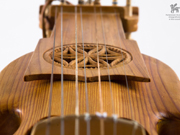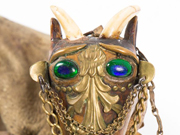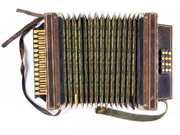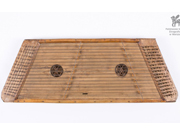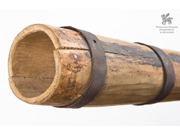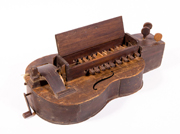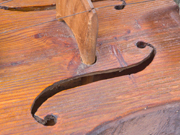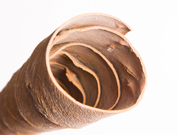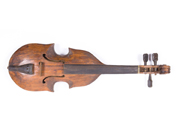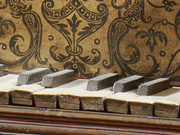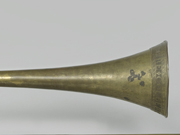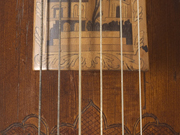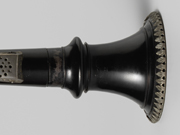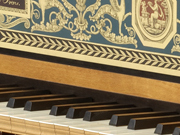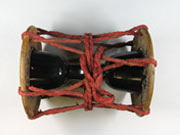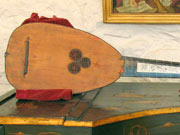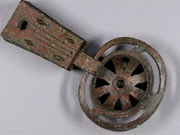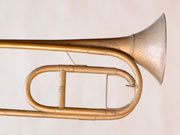Présentation des Musées participants
PHILHARMONIE DE PARIS - MUSÉE DE LA MUSIQUE PARIS - FRANCE

With its collection of over 4,000 instruments – one of the most extensive in the world – its documentary archives and temporary exhibitions housed in a space of over 3,000 m², the museum is a centre for the exploration of the musical heritage, while also reaching out to the cultures of the world and always in a state of evolution. In addition to its collections tracing the history of instruments, from Baroque Italy and the flowering of grand opera to the music of Versailles, the museum also presents the history of instruments of three non-western geographical areas: the Middle East, Asia and Africa. Last but not least, it is also host to highly successful temporary exhibitions. Recognized as a beacon on the national and international scene, the Musée de la Musique is often asked to provide expert consultation, sometimes on a major scale. For example, since 2006 it has been working on the design of the Museum of Musical Instruments set to open in Phoenix, Arizona in 2010. It also regularly mounts exhibitions in collaboration with other institutions (including the Musée d’art et d’histoire in Geneva, Schloss Neuhardenberg, Caixa Catalunya in Barcelona, the Australian Centre for the Moving Image in Melbourne, and the Experience Music Project in Seattle).
http://www.philharmoniedeparis.fr
UNIVERSITY OF EDINBURGH EDINBURGH - SCOTLAND

The University of Edinburgh’s collection of musical instruments ranks among the world's most important. All the main types or musical sound-making device are represented, and are presented to the public in two museums. The c. 5000 objects in the permanent collection constitute a rich research resource of both breadth and depth, and include many historically typical models of musical instrument spanning over 500 years together with prized rare and unique items. The instruments are supplemented by an archive of original materials, working papers and a sound archive. The Collection as a whole attracts researchers from far and wide and is an extensively cited resource in international scholarship. Instruments are lent from time to time to prestigious exhibitions at home and overseas.
The Collection is currently split between two museums, St Cecilia’s Hall and the Reid Concert Hall, however, plans are in place for a major redevelopment of St Cecilia’s, which will see the two collections brought under one roof in the refurbished museum in 2016.
http://www.ed.ac.uk
GERMANISCHES NATIONALMUSEUM NUREMBERG - GERMANY

The Germanisches Nationalmuseum is the largest museum of cultural history within the German-speaking region. 23 collections cover a time span from 30,000 B.C. to the present and hold ca. 1,3 million objects. The musical instrument collection contains more than 3,000 objects mainly of European origin from ca. 1500 to the late 20th century. The outstanding part of keyboard instruments is considered as one of the most important of its kind. The focus lies on pianos of South German and Viennese origin from the time of Mozart to that of Chopin. Another focal point are instruments from the production of the imperial city of Nuremberg before 1806, containing famous brasswind instruments, woodwind instruments from makers as important as the Denner family and string instruments by well-known makers as the Widhalm dynasty. The concert series “Musica Antiqua”, running since 1956 in collaboration with the Bavarian Radio -- Studio Franconia, is devoted to historically informed practice and partly uses museum instruments. The museum also proposes CD-recordings of instruments; further on X-rays, technical drawings and computed tomographies produced by the musical instrument conservation workshop within the Institute for technology of art and conservation IKK.
Germanisches Nationalmuseum - Kartäusergasse 1 - 90402 Nürnberg - Germany
Curator of musical instruments: Dr. Frank P. Bär - E-mail: f.baer@gnm.de
http://www.gnm.de
MUSICAL INSTRUMENTS MUSEUM BRUSSELS - BELGIUM

In a beautifully restored complex in Brussels, of which one part is Art Nouveau and the other, neoclassical in design, the 1200 most interesting instruments are assembled in 4 galleries, enhanced by images, text panels and sounds. In addition the mim has a concert hall, a space for workshops (for groups and by reservation only), a museum shop, a library and a rooftop restaurant, from where the breathtaking view over the city gives a unique flavour to the menu. No wonder that, since its opening in 2000, the mim has become a first class cultural attraction on the Mont des Arts, with an average of 125,000 visitors per year (not including restaurant guests).
http://www.mim.be
SCENKONSTMUSEET STOCKHOLM - SWEDEN
Scenkonstmuseet – Swedish Museum of Performing Arts was originally founded in 1899 (then named ”Musikhistoriska museet”), inspired by an exhibition of theatre and music which was part of the great Stockholm art and industry exhibition of 1897. Via donations and appeals for gifts around 200 musical instruments and an amount of archive material concerning the history of music and theatre were gathered. The museum was opened to the general public in 1901. In 1981 the museum became part of a new public body The Swedish National Collections of Music. At the same time the museum was renamed The Stockholm Music Museum (Musikmuseet), since its activities had broadened and changed in character.
Since 2010 the museum has a new public function and is now a music, theatre and dance museum. Since 2011 the museum is part of Music Development and Heritage Sweden. The museum is closed for a total renovation from January 2014 and will open again in a couple of years with a new approach and new exhibitions.
The instrument collection encompasses approximately 6000 instruments with an emphasis on Western art music and Nordic folk music instruments.
http://scenkonstmuseet.se
GALLERIA DELL'ACCADEMIA - DEPARTMENT OF MUSICAL INSTRUMENTS FLORENCE - ITALY
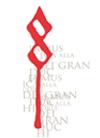
The Department of Musical Instruments of the Galleria dell’Accademia in Florence, dating from 1996 and inaugurated in 2001, houses the collection of antique instruments from the “Luigi Cherubini” Music Conservatory.
Approximately fifty instruments, collected between the mid 1600s and the early 1800s, are displayed in three rooms and come from the private collections of the Houses of the Medici and Lorraine, the Tuscan Grand Dukes. Paintings by Anton Domenico Gabbiani, Bartolomeo Bimbi and others from this period portray the musical life at court of the times and are displayed alongside the instruments.
Among the most interesting instruments on display are: a tenor viola by Antonio Stradivari, the only surviving Stradivari in entirely original conditions; a cello that formed part of that same string quintet made for Grand Prince Ferdinando in 1690; a violin from 1716 by Stradivari and a cello from 1650 by Niccolò Amati. The Museum also has two rare instruments by Bartolomeo Cristofori, the inventor of the piano. One of these is an oval spinet, Cristofori’s earliest surviving work, which was designed and constructed for the Grand Prince Ferdinando in 1690. The other is a harpsichord constructed in ebony, a rare and precious wood that is extremely difficult to work. Finally, another highlight from the collection is the earliest surviving upright piano, a work by Domenico Del Mela and built in 1739.
Six computer stations allow visitors to hear the sound of the instruments in addition to providing explanations and information about cultural and musical context and details on the construction of each instruments. The rest of the collection, which includes approximately three hundred instruments of primarily Tuscan construction, is kept in storage and can be visited by scholars, instrument makers and musicians upon prior request.
Additionally, the Museum has a specialized library that is open to the public by appointment. Among its holdings are volumes from the collection of Alessandro Kraus, a well-known Florentine collector during the late 1800s, which were donated by Baroness Mirella Gatti-Kraus.
The Museum also offers a rich educational programme with guided visits, workshops and concerts for schools and families.
Address: Via Ricasoli 58-60, 50122 Firenze
Hours Tuesday to Sunday, 8,15 am – 6,50 pm Closed Monday, New Year’s Day, May 1st, Christmas Day.
Collection accessibility : permanent exhibition - The collection is part of: Galleria dell'Accademia, Soprintendenza Speciale per il Patrimonio Storico, Artistico ed Etnoantropologico e per il Polo Museale della città di Firenze.
Official website: http://www.uffizi.firenze.it/musei/cherubini
Online catalog of the collection: http://cherubini-opac.polomuseale.firenze.it/dsmfi-web/indice.html
STIFTUNG PREUßISCHER KULTUREBESITZ - ETHNOLOGICAL MUSEUM BERLIN - GERMANY

The Ethnological Museum is located in Berlin-Dahlem, and together with the Museum of Asian Art houses the city's collections of non-European art and culture. This group of collections is internationally one of the most significant of its kind in terms of scope, quality and symmetry. The museum is part of the National Museums in Berlin, which in turn belong to the Stiftung Preußischer Kulturbesitz.
Musical Instrument Collection and Music Archive
Today the Ethnological Museum houses approximately 9500 musical instruments from all over the world. About 3000 of these belong to the department of Ethnomusicology, Media Technology and Berlin Phonogram Archive. Many of those instruments were already present in the museum when Erich M. Hornbostel and Curt Sachs developed their famous classification system for musical instruments, which was published in 1914. The museum is also known for its large music archive, including the collection of historical recordings of the Berlin Phonogram Archive, whose collections of wax cylinder have been inscribed on the UNESCO's Memory of the World register in 1999.
http://www.smb.museum
ROYAL MUSEUM FOR CENTRAL AFRICA TERVUREN - BELGIUM

The Royal Museum for Central Africa (RMCA) is known for being one of the world's most beautiful and impressive museums devoted to Africa. Since its founding in 1898, its task has been to preserve and manage collections, carry out scientific research, and disseminate knowledge to a wide audience through its scientific, educational, and museological activities. The RMCA plays an active role in the sustainable development of Africa, and aspires to be a centre for collaboration and reflection on today's Africa and the challenges it faces.
Its collections, noted for their diversity, are of enormous scientific value and are unique in many ways. The RMCA houses several million animal specimens, about 500.000 photos, 2 km of historical archives - among others the archives of Henry M. Stanley- and more than 150.000 ethnographic objects including more than 8000 musical instruments, making it one of the largest collections of African musical instruments worldwide.
http://www.africamuseum.be
UNIVERSITY OF LEIPZIG - MUSEUM OF MUSICAL INSTRUMENTS LEIPZIG - GERMANY

The renovated Grassi Museum allows Germany’s richest and most extensive musical instrument collection to once again be presented in dignified surroundings. The chronologically organized exhibition The Search for the Perfect Sound offers insights into the multifaceted world of musical instruments and historic performance practice. The most important eras of music history and instrument making are presented in 12 extensive chapters.
The museum’s history began in 1886, when Paul de Wit (1852-1925), a Dutch music publicist and passionate collector of musical instruments, opened his Museum of Musical Instruments at the Bosehaus, located near St. Thomas Church. His vision was to create a space that would feature a collection of instruments as well as regular concerts in order to present music history in a lively manner. However, de Wit sold his collection to Wilhelm Heyer, a paper manufacturer from Cologne, in 1905. The sale was for commercial reasons and perhaps because of a lack of space. It was not until 1926 that the University of Leipzig succeeded in obtaining the entire collection, which had by then been expanded considerably. The Museum of Musical Instruments opened in the newly built Grassi Museum on May 30, 1929. Integrated with the university, the museum has been a vital part of research and teaching since then, while simultaneously presenting its treasures to a broad audience in a public exhibition.
But what would a museum of musical instruments be without sound? Today, state-of-the-art technology allows for numerous ways of making the vision of the collection’s founder Paul de Wit a reality. In the exhibition rooms, the music of centuries past is brought to life with the press of a button. A comprehensive program of guided tours, concerts, films with theater organ accompaniment, and other events will please those who would rather hear the ‘live’ version of the featured musical instruments. The Klanglabor (sound laboratory) lets visitors experience and play on instruments from all over the world. We would like to welcome all visitors on a journey through different historical eras as well as different worlds of sound.
http://mfm.uni-leipzig.de
MUSEU DE LA MUSICA BARCELONA - SPAIN

In March 2007, the Museu de la Música de Barcelona reopened its doors to the public at L’Auditori, with a completely new presentation of its collections of instruments and musical documents. The permanent exhibition comprises nearly five hundred instruments from different periods and cultures, selected from among the total of about 2,000 instruments forming the Museum’s collection, which is considered the foremost of its kind in the Iberian Peninsula. Organised in various areas and with the support of audiovisuals featuring music, pictures and text, the Museum invites visitors to enter the world of music in a direct experiential way, and to discover how music has been a vehicle of expression and communication for humanity over the course of history. The main path through the Museum begins with an introduction to instrument morphologies and goes on to the evolution of music in time and space, presenting the birth and spread of polyphony, the innovations of the Baroque and of Classicism, the new colours of sound and the sound industry in the 19th century, as well as the musical styles and technologies of the 20th century.
The collections
The Museu de la Música possesses three heritage collections ?the instrumental fonds, the historic archive and the sound fonds?, which are the fruit of a series of legacies, donations and acquisitions. It has instruments from all the world’s continents and from all periods, ranging from those of the pre-Columbian cultures to those of the 21st century. Special mention should be made of the valuable collection of close to one hundred guitars, with pieces that illustrate the various periods in this instrument’s history from the Baroque to the present day, including three guitars by the master luthier Antonio de Torres. It also features valuable lutes and violas da gamba from the 17th and 18th centuries, and wind instruments from the 16th to the 19th centuries. Among the Museum’s many keyboard instruments, we may mention the harpsichord built by Christian Zell in 1737, the unique claviorgan built by Laurentz Hauslaib at the end of the 16th century, and the positive organ by Manuel Pérez Molero from 1719, all three suitable for performance. Likewise, the Museum displays several pianos which belonged to such Catalan composers as Isaac Albéniz and Frederic Mompou.
The Museum’s Documentation and Research Area offers direct access to documentary materials, recordings and specialised bibliography. And thanks to its research and restoration programme, the Museum now has a number of instruments in perfect condition for use, exercising at all times a strict control of their state of conservation. The success of this constant endeavour is reflected by the numerous activities and concerts which are held with these splendid instruments and by the recordings which have been produced (including The Hauslaib claviorgan in the Museu de la Música de Barcelona, in e-book format, and The Lion Guitar CD).
Royal College of Music Museum LONDON - UNITED KINGDOM

The RCM Museum is situated at the heart of the Royal College of Music in South Kensington, London, and preserves and displays an internationally renowned collection of c. 1,000 musical instruments dating from the 15th century to the beginning of the 20th, together with a vast collection of portraits, engravings and photographs mostly related to the history of English music. Highlights of the collection include the earliest known stringed keyboard instrument - an upright harpsichord dated c.1480, a guitar signed by Belchior Dias (Lisbon 1581) which most likely belonged to the Medici court in Florence, a fine collection of 17th century English viols and instruments by Alessandro Trasuntino, Giovanni Celestini, Magnus Tieffenbrucker, Joachim Tielke and Jacob Denner.
Given its position in one of the world’s leading conservatoires, the Museum strives to combine careful conservation with access to the playable instruments in its collection and many of them can be heard during public performances and events. It is also active in research projects on the history of musical instrument making and scientific approaches to preservation and use of early musical instruments.
In early 2016 the gallery will be closed to the public and the collections will be accessible exclusively online and by appointment. An entirely new gallery will be built and is scheduled to open to the public by autumn 2018.
http://www.rcm.ac.uk/life/facilitiesresources/museum/
INSTITUTE OF MUSIC AND DANCE - PROJECT WWW.INSTRUMENTS.EDU.PL WARSAW - POLAND

The project www.folk.instruments.edu.pl was implemented by the Institute of Music and Dance in 2014 marking the Oskar Kolberg Year that celebrated the bicentenary of the prominent Polish folklorist and ethnographer. The database contains nearly 250 Polish folk instruments from across the country that are now in the custody of the Museum of Folk Musical Instruments in Szydlowiec, the State Ethnographic Museum in Warsaw, the Musical Instrument Museum and the Ethnographic Museum in Poznan (departments of the National Museum in Poznan), as well as the Jadwiga and Marian Sobieski Collection. On the website you will find around 1000 high quality photos and objects captured using 360 degree imaging. As the concept of norm with respect to folk instruments is labile, and can be determined only by setting different variants of instrument construction side by side, it is extremely important that a wide material for comparisons is available. The database contains most kinds of folk instruments found in Poland, their most interesting types and variants. The items date from different eras (18th-21st century) and display changes in construction and adorning that took place over time due to different factors. This allows for contrasting items built centuries ago and ones made today, e.g. as a result of folkloristic revival efforts. You will find in the database instruments that may be played today along with ones that are inoperative (their descriptions feature hypothetical assumptions on their scale or tuning). The project presents folk instruments in a regional context.
www.instruments.edu.pl
MUSEUM OF FOLK MUSICAL INSTRUMENTS IN SZYDLOWIEC SZYDLOWIEC - POLAND

The museum was established in 1968. It boasts the largest collection of folk instruments in Poland. The permanent exhibition was put together by Jadwiga Sobieska and Jan Steszewski (1975), while the new one (2015) was devised by Professor Zbigniew J. Przerembski and Aneta Oborny. The collection encompasses over 2000 exhibits from across Poland and Europe (including professional and mechanical instruments) dating from the 17th-21st centuries. The museum has an exceptionally rich collection of Polish accordions, dulcimers, and bagpipes.
www.muzeuminstrumentow.pl
NATIONAL MUSEUM IN POZNAN POZNAN - POLAND
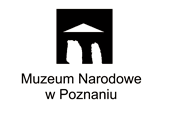
Musical instruments in the custody of the National Museum in Poznan are housed by its two departments: the Musical Instrument Museum and the Ethnographic Museum. The former (established after World War II and endowed with Zdzislaw Szulc's pre-war collection) boasts around 2500 exhibits from all continents: European professional and folk instruments, non-European instruments, and musical documents, from the past and the present, the oldest dating back to the Lusatian and pre-Columbian cultures. The museum has a particularly impressive collection of plucked and bowed string instruments, keyboard instruments, wind instruments, and Polish folk instruments. The Ethnographic Museum's post-war collection contains instruments mainly from the region of Greater Poland (Wielkopolska), dating from the 19th and the 20th century.
www.mnp.art.pl
THE STATE ETHNOGRAPHIC MUSUEM IN WARSAW WARSAW - POLAND
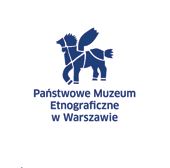
The oldest in Poland and one of the largest ethnographic museums in Europe, the State Ethnographic Museum in Warsaw was established in 1888 on the initiative of Jan Maurycy Kaminski and Jan Karlowicz. It houses around 74000 exhibits from all around the globe.
www.ethnomuseum.pl
JADWIGA AND MARIAN SOBIESKI COLLECTION SZYDLOWIEC - POLAND
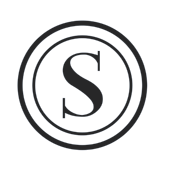
Jadwiga and Marian Sobieski, prominent Polish ethnomusicologists, started their research into Polish folk music in the 1930s. In 1950-54 they took part in the nationwide Fieldwork Collection of Musical Folklore. Long-standing employees of the Institute of Art, Polish Academy of Sciences, they published a range of books and papers on Polish folk music heritage, and developed a system of music transcription for the study of Polish folklore. The collection of musical instruments they assembled during their field trips dispersed. The objects presented here come from the collection of the Museum of Folk Musical Instruments in Szydlowiec.
http://ludowe.instrumenty.edu.pl/pl/muzea/muzeums/muzeum/159
RIJKSMUSEUM AMSTERDAM - NETHERLANDS

The Rijksmuseum is the iconic museum of the Netherlands. In 80 galleries, 8.000 objects (paintings, sculptures, prints, drawings, photographs, objects from Dutch history, silver, porcelain, glassware, ceramics, furniture, jewellery, costumes, textiles, and of course musical instruments) tell the story of 800 years of Dutch art and history, from the Middle Ages to the 20th century. The Rijksmuseum’s collection of instruments includes about 500 objects. They were mostly acquired in the second half of the 19th century from private collectors such as the Dutch composer and musicologist Johan Coenradus Boers (1812-1896). Other instruments were donated by art lovers or were placed on permanent loan by the State and institutions such as the Koninklijk Oudheidkundig Genootschap (the Royal Historical Society), the Kabinet van Zeldzaamheden (the Cabinet of Rarities), and the City of Amsterdam. From 1952 to 2012 the collection was given on long-term loan to the Gemeentemuseum in The Hague. After the Rijksmuseum renovation, in 2013, the entire collection was brought back to Amsterdam. Among the items on display are pieces of exceptional rarity and quality such as the ivory hunting horn given in 1095 to the Bishop of Utrecht; the 1593 French trombone and early 17th-century cornettos played by the Staadtpfeiffers of the city of Amsterdam; an outstanding selection of 17th and 18th-century Dutch woodwind instruments (such as shawms, oboes and recorders); 17th and early 18th century viols, keyboard instruments including the luxury 1808 Erard piano which was bought by King Louis Bonaparte for the Royal Palace in Amsterdam.
Curator of musical instruments: Dr. Giovanni Paolo Di Stefano, e-mail: g.di.stefano@rijksmuseum.nl
https://www.rijksmuseum.nl
THE NYDHAL COLLECTION STOCKHOLM - SWEDEN
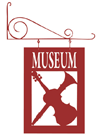
The Nydahl Collection (The Foundation for the Advancement of Music Culture), was founded in 1920 by Rudolf Nydahl (1882-1973). Nydahl studied music at Conservatoire de Paris in the beginning of the last century, but eventually returned home to Sweden to manage a wine shop founded by his father. When the Swedish state in 1919 monopolized the trade with alcohol, it expropriated the Nydahl wine shop. Rudolf Nydahl used the income to further his great interest in music by creating a music foundation already the following year 1920. The objective of this foundation was to establish an institution, in the manner of the Conservatoire de Paris, serving in education and research. The institute would collect and maintain an archive of music manuscripts, scores, letters and other music-related material. A museum of items collected by Rudolf Nydahl was first opened in Stockholm in 1967, and was in 1979 moved to its present location at Riddargatan 37 in Stockholm . In addition to its archives, the Museum houses a collection of approximately 550 old instruments, of which 75 are keyboard instruments, such as harpsichords, clavichords, pianos and organs dating from the 16th century up to the 1940's. Two hundred of these are on permanent display in six rooms, of which three are furnished in period style.
http://www.nydahlcoll.se
THE NORWEGIAN MUSEUM OF CULTURAL HISTORY OSLO - NORWAY
http://www.norskfolkemuseum.no
MUSÉE DU PALAIS LASCARIS NICE - FRANCE
MUSÉE DE L'HOSPICE COMTESSE LILLE - FRANCE
MUSÉE AUGUSTE GRASSET VARZY - FRANCE
PÔLE ACCORDÉONS TULLE - FRANCE
MUSÉE DES INSTRUMENTS À VENT LA COUTURE-BOUSSEY - FRANCE
MUSEON ARLATEN ARLES - FRANCE
MUSÉE DE LA MUSIQUE MÉCANIQUE LES GETS - FRANCE
MUSÉE DES INSTRUMENTS DE MUSIQUE L'AIGLE - FRANCE
MUSÉE DE LA LUTHERIE ET DE L'ARCHÈTERIE MIRECOURT - FRANCE
MUSÉE DE LA CASTRE CANNES - FRANCE
MUSÉE DES MUSIQUES POPULAIRES MONTLUÇON - FRANCE
